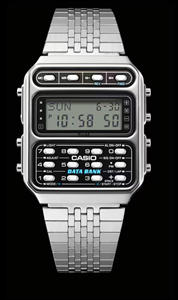Wearables
Wearable technology has rapidly transformed from futuristic gadgets to everyday essentials. These devices, which range from smartwatches to fitness trackers and augmented reality glasses, have revolutionized how we interact with technology and manage our health. In this blog, we’ll explore the history of wearables, their key features, and the different types available.
The Evolution of Wearable Technology
The concept of wearable technology is not new, but recent advancements have brought it to the forefront of consumer electronics:

Early Concepts (1960s-1990s): The idea of wearable technology dates back several decades, with early examples including wristwatches with built-in calculators and pagers. These devices were primarily focused on specific functionalities rather than being multi-purpose gadgets.

The 2000s – Wearables Take Off: The early 2000s saw the rise of wearable fitness trackers, such as the original Fitbit, which monitored basic activities like steps taken and calories burned. This period also witnessed the development of Bluetooth headsets, which paved the way for wearable communication devices.
The Smartwatch Revolution (2010s): The launch of the Apple Watch in 2015 marked a significant turning point for wearables. It combined fitness tracking, communication, and smart notifications in a sleek, user-friendly design. Around the same time, other brands like Samsung, Garmin, and Fitbit also released smartwatches, further popularizing the wearable tech market.

Expansion to Other Wearables: Beyond smartwatches, other wearable devices emerged, including smart glasses (like Google Glass), VR headsets, and smart clothing. These innovations expanded the definition of wearables and showcased their potential in various industries, from fitness and healthcare to entertainment and fashion.

Recent Trends: Today, wearables are more sophisticated than ever, incorporating advanced health monitoring features, AI-driven insights, and seamless integration with smartphones and other devices. The market has also seen growth in specialized wearables, such as sleep trackers, stress monitors, and even smart rings.
Key Features of Modern Wearables
Modern wearables offer a wide range of features that cater to different needs and lifestyles. Here are some of the most important ones:
Health and Fitness Tracking: One of the primary functions of wearables is to monitor various health metrics. These can include heart rate, steps taken, calories burned, distance traveled, sleep quality, and more. Advanced wearables can also track specific activities like swimming, cycling, and even mindfulness practices. Some devices offer ECG (electrocardiogram) readings, blood oxygen levels, and fall detection, making them valuable tools for health management.
Notifications and Communication: Wearables like smartwatches allow users to receive notifications for calls, messages, emails, and app alerts directly on their wrists. This feature enables users to stay connected without constantly checking their phones. Some wearables even allow for voice commands, quick replies, and the ability to make and receive calls directly from the device.
GPS and Navigation: Built-in GPS is a common feature in many wearables, particularly those designed for outdoor activities like running, hiking, and cycling. GPS enables accurate tracking of routes, distance, and speed, making it a valuable tool for athletes and outdoor enthusiasts.
Water Resistance: Many modern wearables are water-resistant, allowing users to wear them while swimming, showering, or in the rain. This feature is particularly important for fitness trackers and smartwatches, as it enables continuous monitoring during all types of physical activity.
Battery Life: Battery life varies significantly across different wearable devices. Some fitness trackers can last up to a week on a single charge, while feature-rich smartwatches may need to be charged daily. Longer battery life is generally preferred, especially for users who engage in extended outdoor activities or those who prefer not to charge their devices frequently.
Customization and Personalization: Wearables often come with customizable watch faces, bands, and widgets, allowing users to personalize their devices to match their style and preferences. Some smartwatches also offer customizable health and fitness goals, notifications, and app layouts.
Integration with Other Devices: Wearables are designed to work seamlessly with smartphones, tablets, and other smart devices. This integration allows for synchronized data, such as fitness stats, notifications, and music playback controls. Ecosystem compatibility (e.g., Apple Watch with iPhone, Samsung Galaxy Watch with Samsung devices) often enhances the user experience.
Advanced Sensors: High-end wearables come equipped with a variety of sensors, including accelerometers, gyroscopes, barometers, and even skin temperature sensors. These sensors collect detailed data that can be used for more accurate health monitoring and activity tracking.
Types of Wearable Devices
Wearables encompass a broad range of devices, each designed for specific use cases and user preferences:
Smartwatches: Smartwatches are perhaps the most popular type of wearable. They offer a blend of health tracking, communication features, and app integration. The Apple Watch, Samsung Galaxy Watch, and Garmin Fenix series are examples of smartwatches that cater to different needs, from casual use to professional fitness tracking.
Fitness Trackers: Fitness trackers are more focused on health and activity monitoring than smartwatches. Devices like the Fitbit Charge, Garmin Vivosmart, and Xiaomi Mi Band track steps, calories, sleep, and more, often with a simpler interface and longer battery life than smartwatches.
Smart Glasses: Smart glasses, such as Google Glass and Bose Frames, offer a mix of augmented reality (AR), audio playback, and hands-free communication. While still a niche market, smart glasses are being used in specific industries like healthcare, logistics, and entertainment.
Virtual Reality (VR) Headsets: VR headsets like the Oculus Rift and PlayStation VR immerse users in virtual environments for gaming, simulations, and even virtual meetings. These wearables are popular in gaming and are increasingly being used for training and educational purposes.
Augmented Reality (AR) Wearables: AR wearables, including devices like Microsoft HoloLens, overlay digital information onto the real world. These devices are often used in professional settings, such as engineering, architecture, and medical training.

Smart Rings: Smart rings like the Oura Ring and Motiv Ring offer a discreet way to monitor health metrics like sleep, heart rate, and activity levels. These devices are favored for their minimalist design and ease of use.

Smart Clothing: Smart clothing integrates technology directly into fabric, offering features like biometric monitoring, posture correction, and even temperature regulation. Examples include the Hexoskin biometric shirt and the Nadi X yoga pants, which guide users through poses with gentle vibrations.
Hearables: Hearables, such as Apple AirPods Pro and Bose QuietComfort Earbuds, are wireless earbuds that combine audio playback with smart features like voice assistants, noise cancellation, and biometric monitoring.
Future Trends in Wearable Technology
The wearable tech industry is constantly evolving, with new innovations and trends shaping the future:
Health and Wellness Focus: Future wearables will likely offer even more advanced health monitoring features, including continuous glucose monitoring, more accurate sleep tracking, and early detection of medical conditions.
AI and Machine Learning Integration: Wearables will increasingly incorporate AI and machine learning to provide personalized insights, predictive analytics, and automated health recommendations based on user data.
Enhanced AR and VR Experiences: AR and VR wearables will become more immersive, with better graphics, lighter designs, and broader applications beyond gaming, such as virtual tourism, remote work, and education.
Sustainable and Eco-Friendly Wearables: As environmental concerns grow, manufacturers are focusing on sustainability, using recycled materials, and designing wearables that are easier to repair and recycle.
More Discreet and Fashionable Designs: Wearables will continue to become more discreet and stylish, blending seamlessly with everyday clothing and accessories. This trend will make wearable technology more appealing to a broader audience.
Wearable technology has become an integral part of modern life, offering a wide range of functionalities that cater to different needs and lifestyles. Whether you’re looking to track your fitness, stay connected on the go, or experience immersive virtual environments, there’s a wearable device for you. By understanding the key features, types, and future trends, you can choose the right wearable that not only meets your needs but also enhances your daily life.
